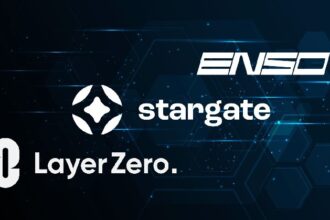Introducing verifiable computing
Digital trust has become an important issue as more systems rely on computational verification. The Nexus project addresses this challenge by building what researchers call the “verified Internet.” This is a system that can prove that all calculations are encrypted and correct.
Nexus Labs has developed this technology to create a planetary-scale supercomputer equipped with the Nexus Layer 1 blockchain and a Zero Knowledge Virtual Machine (ZKVM). The purpose of this project is to use open source technology and zero-knowledge encryption to validate everything from artificial intelligence calculations to digital identity.
In the testnet phase, which is currently scheduled to launch the mainnet in the third quarter of 2025, the system represents a significant advance in distributed computing. Here, computational integrity becomes mathematically verifiable rather than trust-based.
What is the Nexus project?
The Nexus project focuses on verifiable calculations. This is a computational paradigm that allows every calculation to prove encrypted accuracy. This scientific and engineering effort is based on nearly 100 years of computer science development, from Alan Turing’s universal Turing machines to the latest zero-recognition cryptography.
The ultimate technical goal of the project is the “proof singularity”, where all verifiable calculations are compressed into a single proof. This advancement allows for seamless integration of millions of blockchain networks and applications.
Core Components
The Nexus works through two main technical components:
Nexus Layer 1 Blockchain It is a planetary-scale supercomputer designed to host global commercial transactions and facilitate verifiable calculations. The system maintains full compatibility with Ethereum Virtual Machine (EVM) and enables developers to use existing Ethereum tools and code when building on Nexus.
Nexus ZKVM A highly parallelized zero-knowledge virtual machine written modular, extensible, open source, and rust-written. The Rust-based architecture allows efficient parallel proof generation across multiple processor cores, significantly improving computational throughput compared to single-thread proof systems. ZKVM ensures both integrity and privacy, both scale integrity and privacy through strict zero-knowledge proofs that allow for verification of computational encryption and compress large computational proofs into large, verifiable certificates.
These components form the backbone of the Nexus Network. It is a distributed proof infrastructure that scales computing power across all nodes provided by users around the world.
Verifiable Internet Vision
Nexus Labs envisions the Internet that not only serves as a data exchange platform, but also as a verifiable ecosystem with proven computation. This includes AI model calculations, financial transactions, and identity verification systems.
The vision detailed in the Nexus ZKVM 1.0 whitepaper published in January 2024 addresses the growing demand for trust in digital systems. White papers available on whitepaper.nexus.xyzprovides an overview of the technical specifications for achieving computational verification on the Internet scale.
By combining zero-knowledge proof with a scalable blockchain infrastructure, Nexus makes verifiable calculations practical and accessible. The system derives technical similarities with transformative computing development, including artificial intelligence, cloud computing, and the creation of the Internet.
The project will integrate advances in zero-knowledge encryption, high-performance computing, and distributed systems to create new calculation forms that will benefit individuals, developers, and organizations.
How the Nexus network works
The Nexus network acts as a distributed proof infrastructure in which devices connected via the Nexus app or Nexus command line interface (CLI) become compute nodes. These nodes run Nexus ZKVM to process programs and input assigned by the Nexus server and generate zero-knowledge proofs for computational validation.
Network Architecture
The parallel computing feature of the network ensures performance scale for each additional node and creates a true global supercomputer. Users can donate computational power from desktops, laptops, mobile phones or servers, with the ability to manage multiple devices from a single Nexus account.
Scalability features:
- Network power is increased for each connected device
- Multi-device management from a single account
- Automatic load distribution across nodes
- Parallel Proof Generation Function
User Interface: Nexus app (app.nexus.xyz) Provides a browser-based interface for donating computing power, without the need for software downloads or complicated setup steps. This system automatically creates wallets without the need for external wallet connections such as meta masks and hardware wallets. Users can begin contributing the computational resources immediately after accessing the web application.
The interface displays real-time statistics on calculation contributions, NEX points earned points, and network participation metrics. Users can earn NEX points for computational contributions and track the progress of the network leaderboard, which ranks contributors by the total accumulated points.
Testing your infrastructure
The Nexus network includes a public testnet for tracking user activity and DevNet for testing new features. A new testnet launched on December 9th, 2024 has been launched, and the goals for verifiable Internet development have been advanced. Testnets further refine network functionality before the mainnet is deployed.
Developer Tools and Ecosystems
Nexus maintains developer compatibility, especially for those who are familiar with it Ethereum development. EVM compatibility in Nexus Layer 1 means that developers can deploy applications using existing Ethereum tools and codebases without modification.
Software Development Kit
The Nexus Software Development Kit (SDK) provides a simple, misuse-resistant interface for application development. The developer uses rust to install the Nexus CLI and creates a project with two program types.
- Host program that runs ZKVM
- Guest programs running on ZKVM
This structure supports rapid development and deployment on the Nexus Layer 1 blockchain.
Open Source Resources
Nexus maintains 14 Github repositories that host open source tools, including the Nexus CLI, network APIs, and ZKVM codebase. These resources allow developers to contribute and build applications within the Nexus ecosystem.
The repository provides documentation, code examples, and integration guides for developers working with zero knowledge proof systems and blockchain applications.
Strategic Partnerships and Network Growth
Nexus Labs has established partnerships to enhance network capabilities and expand computational resources.
Important collaboration
In December 2024, Nexus announced a collaboration with BCW and LLC, bringing additional computational power to the Nexus network. This partnership represents a key milestone in expanding verifiable internet infrastructure.
On May 22, 2025, Nexus partnered with Starkware Ltd. This collaboration enhances the certification generation capabilities of Nexus ZKVM by integrating Stark technology. Stark Proofs offers post-Quantum security assurances and eliminates the need for reliable setup procedures other zero-knowledge systems require. This partnership aims to improve performance, privacy and scalability of validated calculations across the Nexus ecosystem.
These partnerships demonstrate Nexus’ commitment to building a robust co-ecosystem rather than acting as an isolated platform.
Community Engagement and Incentive Systems
Nexus is engaged with the community through NEX points users earn by donating computational power to their networks. These points encourage participation and can be tracked through the Nexus App leaderboard system.
Participation mechanism
The open source approach and accessible tools for the project reduces entry barriers for contributors and developers. Users can access the Nexus app directly via a web browser app.nexus.xyz Without downloading software or configuring an external wallet. The browser-based interface automatically handles wallet creation and device registration, allowing users to start earning NEX points within minutes of their first visit.
For advanced users, the Nexus CLI provides command line access to manage multiple devices, monitor computational contributions, and integrate them with development workflows. Although rust is required for CLI installation, there is a greater control over node configuration and performance optimization.
The system highlights the principles of open science and allows software and technical documentation to be published through white papers. whitepaper.nexus.xyz Promoting collaboration and innovation.
Community members can contribute as follows:
- Running a Compute Node
- Developing applications using the SDK
- Contributes to open source repositories
- Participation in the Test Network
Development Roadmap and Timeline
Nexus Labs outlines specific development milestones with measurable targets for network deployments.
Funds and resources
The project raised $27.2 million in funding from investors including Pantera Capital, Lightspeed, Dragonfly and Faction VC. This funding provides resources to expand the infrastructure and achieve the technical vision outlined in the project documentation.
Startup schedule
- Testnet Phase: Released in December 2024 with continuous development
- Continuous Testing: Continued the testnet phase throughout 2025 to improve functionality
- Starting the mainnet: Scheduled for the third quarter of 2025
The testnet phase allows for network stress testing, functional verification and community feedback integration before the mainnet is deployed.
Technical features and performance
The Nexus system provides specific technical capabilities that address current limitations of distributed computing and blockchain verification.
Zero-knowledge virtual machines process the calculations while generating encrypted proofs of accuracy. This eliminates the need for trust-based verification systems that are common in traditional distributed computing.
Network performance scales linearly with the addition of nodes, unlike traditional blockchain networks that face throughput limitations. Parallel proof generation systems distribute computational workloads across available nodes, while maintaining validation integrity.
EVM Compatibility allows existing Ethereum applications to be deployed to Nexus without code changes, providing developers with immediate utility and reducing migration costs.
Conclusion
The Nexus project combines blockchain technology with zero-knowledge encryption to create a global supercomputer that enables verifiable calculations at the Internet scale. System’s Layer 1 Blockchain ZKVM also provides a verifiable Internet technical foundation where computational integrity can be mathematically proven.
Nexus has established the infrastructure needed for widespread adoption through strategic partnerships, developer-friendly tools and community incentive systems. The open source approach and EVM compatibility of the project reduces technical barriers while maintaining high security standards.
With $27.2 million in funding and a clear development roadmap leading to the launch of the mainnet in the third quarter, Nexus is positioned to deploy a verifiable computing infrastructure. The system’s ability to scale computing power in network growth addresses the fundamental limitations of current distributed computing systems.
Users can access the Nexus Network and start joining app.nexus.xyz It contributes to your calculation power and earns NEX points. Developers interested in building verifiable applications can access SDKs and documents via projects Gilb Repository. Follow X’s Nexus for the latest updates and technology developments @nexuslabs Or visit nexus.xyz Comprehensive project information.






